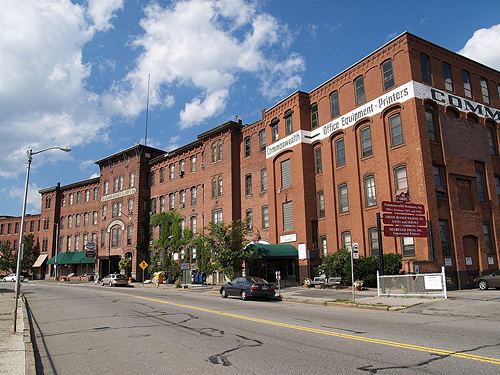Built 1863 MPS Worcester MRA Opened 1863 | Architectural style Late Victorian NRHP Reference # 80000439 Added to NRHP 5 March 1980 | |
 | ||
Similar Blackstone Canal, Salisbury Mansion and Store, Worcester Historical Museum, Bancroft Tower, Mechanics Hall | ||
The Washburn and Moen North Works District encompass an industrial complex that housed the largest business in Worcester, Massachusetts in the second half of the 19th century. Founded in 1831, Washburn and Moen was an innovating manufacturer of wire and related products, including telegraph wire, barbed wire (for which the company acquired a manufacturing monopoly), which were used in large quantities during America's westward expansion. The company's Grove Street complex was developed in the 1860s and 1870s, and was used all or in part by the company and it successors until 1943. It continues to be used for light industrial manufacturing (including specialty wire products), and was listed on the National Register of Historic Places in 1980.
The complex is located north of downtown Worcester, between Grove and Prescott Streets north of Faraday Street. It consists of thirteen brick buildings, the oldest of which was built in 1863. Located at the southern end of the complex, the Cotton Mill manufactured cotton that was used to wrap crinoline wire that was used in hoop skirts. When hoop skirts went out of fashion, the building was converted to produce wire. Originally a three story building, it was raised to four between 1888 and 1892.
Seven buildings were built in 1869 and 1870, representing the major development of the complex. The primary focus of this expansion was the Main Mill, which is 165 feet (50 m) long, and the Long Mill, which is 196 feet (60 m). The Main Mill was originally built with three stories and a mansard-roofed fourth, which was raised to a full fourth story c. 1900. The Long Mill was originally 2.5 stories, and was raised to a full three stories in 1880.
Further buildings were built after 1878, and the existing buildings were also added to or otherwise modified, primarily in the years before 1920. The last major addition was an extension on the north end of the Long Mill in 1916.
